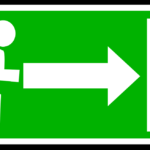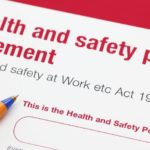Fire safety in the workplace
Does your workplace comply with UK fire safety legislation?
According to UK legislation, the person or persons responsible for fire safety in the workplace, business premises or any other non domestic premises include the business owner, employer, landlord and buildings/facilities Manager.
In some circumstances, there will be more than one person responsible for fire safety, eg in shared premises, meaning they will have to work together to follow best practices and legislation.
But what does being the ‘responsible person’ involve exactly when it comes to fire safety in the workplace?
In accordance with UK law, the ‘responsible person’ must carry out a fire risk assessment of the premises and also make sure they review it on a regular basis.
Additionally, the ‘responsible person’ must inform staff or their representatives about any fire safety risks they’ve identified in the workplace.
Then they must ensure that appropriate fire safety measures are put in place and maintained to protect staff and visitors to the premises.
They must also make sure they have made a sufficient plan in case of emergency and they must provide staff with information, fire safety instruction and training.
This law applies to all UK workplaces and commercial premises, including those premises that the public have access to and also common areas of multiple occupancy residential buildings.
Carry out a fire risk assessment
In order to comply with fire safety in the UK workplace, anyone identifying as the ‘responsible person’ must carry out a fire risk assessment of the premises and regularly review it.
Your fire risk assessment will help you identify what you need to do in order to prevent fire and consequently how to keep people safe at work.
If your business has 5 or more employees, then you must keep a written record of your fire risk assessment.
So what does carrying out a fire safety risk assessment for the workplace involve?
These are the essential things that must be included in your fire risk assessment:-
- Identification of the fire hazards.
- Identify any people that are at risk.
- An evaluation of the risks, details of any risks removed and details on how any existing risks will be reduced.
- Record of your findings, an emergency fire plan and details of any fire safety training.
Remember that you must review and update the fire risk assessment regularly for it to remain effective.
Whilst carrying out your fire risk assessment, there will be various things that you’ll have to take into consideration such as:-
- location of any emergency routes and exits
- fire detection and warning systems (eg smoke alarms)
- fire fighting equipment (fire extinguishers)
- the removal or safe storage of dangerous substances
- a detailed emergency fire evacuation plan
- the needs of vulnerable people, for example the elderly, young children or those with disabilities
- providing information to employees and other people on the premises on fire procedure
- staff fire safety training records
You can do the fire risk assessment yourself with the help of standard fire safety risk assessment guides as supplied by the HSE.
It should be relatively straightforward to do your own fire risk assessment using one of these guides, but if you just don’t have the time to do it yourself, you can appoint a professional risk assessor to do it for you.

Make a fire evacuation plan
Part of your fire safety risk assessment for use in the workplace must include an emergency fire evacuation plan.
Your fire evacuation plan must clearly demonstrate that you have the following safety law criteria in place:-
- a clear passageway to all escape routes with no obstructions
- clearly marked escape routes that are as short and direct as possible
- enough exits and routes for all people to escape safely in emergencies
- emergency doors that open easily and also fire doors
- emergency lighting where needed
- training for all employees so they know about and how to use the emergency escape routes in the event of a fire
- a safe meeting point for staff (eg staff car park)
And don’t forget to include instructions and arrangements for any people with mobility needs who will need assistance getting out of the building.
Fire safety equipment, drills and training
To comply with fire safety regulations in the workplace, it is vital that you have a fire detection and warning system in place.
Depending on the type of building you have, it may mean that you need different types of fire detectors.
Fire fighting equipment such as fire extinguishers will also be an essential requirement, and the types of equipment you’ll need will depend on your business premises i.e. size and type.
You’ll need to have any fire fighting equipment properly installed, tested and maintained by professionals and you must also train your staff to be able to use them as and when necessary in the event of a fire.
When it comes to the maintenance and testing of fire detection systems and fire fighting equipment, it’s important that you as the ‘responsible person’ carry out regular checks.
These regular checks are to ensure the following:-
- all fire alarm systems are working correctly
- the emergency lighting is working as it should
- you record any faults in systems and equipment and plan repairs accordingly
- all escape routes are clear and the floor is in good condition with no obstructions or trip hazards
- all fire escapes are clearly visible and can be opened easily
- automatic fire doors close correctly
- fire exit signs are in the right place and are clearly visible
With regards to staff training, it’s essential that all new employees receive full fire safety training when they start work with you in the workplace, and you must also inform any existing employees about any new fire risks that are identified.
Fire drills should be carried out at least once a year and the results recorded, ensuring these fire drill results are then kept with the fire safety and evacuation plan.

Enforcement, appeals and penalties
Did you know that you could be fined or go to prison if you don’t follow UK fire safety regulations in the workplace?
Fire safety in the workplace is a serious matter, and even minor penalties can result in fines of up to £5,000.
More serious penalties can result in more hefty fines and mean you facing up to 2 years in prison.
Enforcement of fire safety procedures is usually done via your local fire and rescue authority who will visit the premises to check that the fire risk assessment and fire prevention measures you have in place are appropriate and in line with regulations.
If you need any help in understanding the rules for fire safety in the workplace, then Fire safety officers should be able to help you comply with them.
Fire safety officers have the authority to issue you with a formal or informal fire safety notice if they don’t think you are meeting the requirements or are following safety guidelines.
This fire safety notice will give instructions on how to fix any problems that have been highlighted.
It’s also possible if your premises have high safety risks or will have high safety risks if the use of the premises changes that you could receive an alterations notice.
And if your local fire and rescue authority discovers there is a serious risk that you aren’t managing, they could issue you with an enforcement notice which will include deadlines to rectify any issues.
In worst case scenarios, you could face a prohibition notice for not following fire safety guidelines in the workplace.
Prohibition notices are issued immediately in emergency cases where the fire and rescue authority thinks the risk is too great for the premises to be open and so should be shut down straight away.
You may be able to arrange an informal review from your fire and rescue authority if you disagree with the decision to issue a fire safety notice.
If you have been given an informal or formal notice by the local authority, then you have the right to appeal to your local magistrates’ court within 21 days.
Fire safety online courses
Here at UK Online Training we offer a selection of online fire safety training courses as follows:-
- Fire Marshal for care homes
- Fire Marshal training
- Fire extinguisher training
- Basic fire safety awareness for car homes
- Basic fire safety awareness
Need help in finding the right online Fire Safety training course for use in your workplace? Then complete the contact form on this page or give us a call on 0161 763 3727 and we’ll be happy to assist.
Other articles you may find interesting…
- Health & safety legislation UK FREE On-line course Certificate & Support
 Are you a business owner needing to know more about health and safety legislation in the UK? This article sets out your legal responsibilities under UK law.
Are you a business owner needing to know more about health and safety legislation in the UK? This article sets out your legal responsibilities under UK law. - Fire safety in the workplace

 Business owners, Landlords, commercial property owners & managers must follow strict regulations for fire safety in the workplace in the UK. Read our article to find out what your responsibilities are.
Business owners, Landlords, commercial property owners & managers must follow strict regulations for fire safety in the workplace in the UK. Read our article to find out what your responsibilities are. - Display Screen Equipment Awareness online training

 Are you a business owner needing to know more about health and safety legislation in the UK? This article sets out your legal responsibilities under UK law.
Are you a business owner needing to know more about health and safety legislation in the UK? This article sets out your legal responsibilities under UK law. - First Aid Regulations UK

 Are you a UK employer and wondering what you must do to comply with the first aid regulations? This article will explain what you need to know and do.
Are you a UK employer and wondering what you must do to comply with the first aid regulations? This article will explain what you need to know and do. - Workplace Health and Safety


 Business owners, Landlords, commercial property owners & managers must follow strict regulations for fire safety in the workplace in the UK. Read our article to find out what your responsibilities are.
Business owners, Landlords, commercial property owners & managers must follow strict regulations for fire safety in the workplace in the UK. Read our article to find out what your responsibilities are. - Working Safely training course

 Business owners, Landlords, commercial property owners & managers must follow strict regulations for fire safety in the workplace in the UK. Read our article to find out what your responsibilities are.
Business owners, Landlords, commercial property owners & managers must follow strict regulations for fire safety in the workplace in the UK. Read our article to find out what your responsibilities are.
